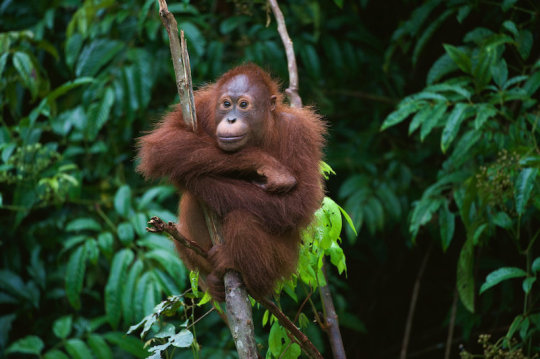[ad_1]
A recent study published in the peer-reviewed journal PeerJ — the Journal of Life and Environmental Sciences highlights the fact that the economic benefits of commodity export for primate habitat countries has been limited relative to the extreme environmental costs of pollution, habitat degradation, loss of biodiversity, continued food insecurity and the threat of emerging diseases.
The world’s primate fauna, distributed in the Neotropics, Africa and in South and Southeast Asia, represents an important global component of the Earth´s land-based biodiversity. The presence and activities of primates support a range of tropical community-wide ecological functions and services that provide vital resources to natural ecosystems, including local human populations.
Alarmingly, around 60% of primate species are now threatened with extinction and ~75% have declining populations as a result of escalating anthropogenic pressures resulting in deforestation, habitat degradation, and increased spatial conflict between an expanding human population and the natural range of primates.
The study finds that growing market demands for food and nonfood commodities from high-income nations and the global community at large are significant drivers of rapid and widespread primate habitat loss and degradation.
The global consumption of food and natural resources, along with an increasingly globalized economy has created an expanding international market for agricultural products. Such growth is also reflected in the growth of the area of deforestation that is commodity driven. Available evidence indicates that between 2001 to 2015, 160 million hectares of forest were lost in the tropics due to human activities and that 50% or more of this loss was commodity driven. That is, forests were converted to agricultural fields, cattle pastures, mines to extract minerals and metals, fossil fuel exploration, and urbanization.
Given that global commodity resource extraction is predicted to more than double, from 85bn tonnes today to 186bn by the year 2050, reversing the current trend of primate population decline and extinction due to habitat loss and degradation will require a stronger global resolve to reduce the world’s per capita demand for forest-risk food and nonfood commodities from primate-range regions, while at the same time implementing sustainable land use practices that improve the standard of living for local human communities, protect local biodiversity, and mitigate climate change.
In order to avoid the impending extinction of the world´s primates, the researchers suggest a number of measures to be implemented including changing global consumer habits (e.g., using less oil seed, eating less meat), the creation of an international environmental improvement fund to mitigate the negative effects of forest-risk commodities trade, and assigning responsibility for environmental damage to those international corporations that control production, export, and supply chains.
Authors Alejandro Estrada, Paul A. Garber and Abhishek Chaudhary write, “Growing global consumer demands for food and non-food commodities from primate range regions are placing primate populations at risk of extinction. These increasing demands have resulted in an accelerated global expansion of agriculture and of extractive industries and in the growth of infrastructure to support these activities leading to widespread primate habitat loss and degradation.”
“Primates and their habitats are a vital component of the world’s natural heritage and culture and as our closest living biological relatives, nonhuman primates deserve our full attention, concern, and support for their conservation and survivorship,” the authors argue.
Story Source:
Materials provided by PeerJ. Note: Content may be edited for style and length.
[ad_2]















